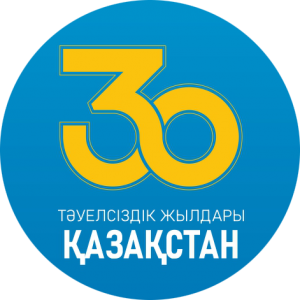Sacred objects of Kazakhstan
Sacred wealth of Kazakhstan
According to the President’s article “Rukhani Zhagyru”, the projects “Tugan zher”, “Sacred places of Kazakhstan” are being implemented. These are the spiritual rebirths of Kazakhstanis. Every person, regardless of age, social status, nationality, is obliged to know, honor and preserve the history of his land, ancestors, his country.
The land of Kostanay region is rich in monuments of history and culture. Mausoleums, ancient settlements, to this dayit keeps the secrets of the past centuries.
Torgaigeoglyphs
The Torgai geoglyphs are represented by the Ushtogai square and the Torgaitriquetr (an ancient sacred ornamental symbol). ThesefacilitiesarelocatedintheAmangeldyregion.
Geoglyphs are relief geometric patterns on the ground that can be clearly seen only from a fairly high altitude. On the territory of the Torgai Trough, Dmitry Dey first discovered geoglyphs in 2007, when he studied images taken from space, which were in the public domain of the Google Earth program.
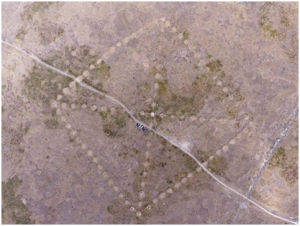
So far, several types of geoglyphs found in the region are known: square, swastika, crosses, ring and lines.
“Ushtogay square” is located near the village of Ushtogay. It is a geometric figure with marked diagonals. The side length of the square is about three hundred meters long; the diagonal length is over four hundred meters long.
Archaeological excavations were carried out on one of the embankments, but no finds were found there. An odd number of mounds, as scientists believe, has a symbolic meaning, because for many peoples odd and even meant the opposition of male and female, heavenly and earthly. Previously, archaeologists attributed the square to ritual and sacral objects, the period between the era of the final Bronze Age and the first centuries of our era.
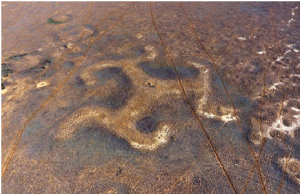


“Torgai triquetr” or Torgai three-rayed swastika, is an earthen embankment, in the form of three rays, each of which ends in a zigzag figure, the ends of which are bent counterclockwise. The swastika fits into a circle with a diameter of 90 meters. Scientists date this structure from the Bronze Age to the Middle Ages. Archaeologists suggest that the Torgai swastika determined belonging to a clan or community.
FortifiedsettlementKamysty
The fortified settlement of Kamysty, the only known monument of the proto-city culture of the ancient Indo-European tribes on the territory of Kazakhstan, which is more than four thousand years old.
The monument was discovered in 1990 by the archaeological expedition of Logvin, who gave it the name “settlement Komarovka-12”. It consisted of cavities from six dwellings, where ceramics and a bone arrowhead were found; the finds were dated to the Bronze Age.
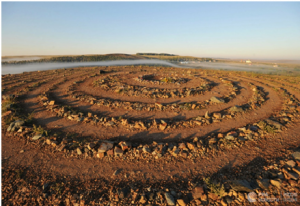


Several years later, fragments of ceramics, stone and bone products, as well as animal bones were found here. Then the monument was assigned to the famous “Country of cities” by Gennady Zdanovich, and became part of twenty fortified settlements of the Aryans.
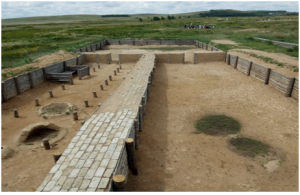


“Country of cities” is located in the Chelyabinsk and Orenburg regions, as well as Bashkortostan and Kostanay region. Settlements are scattered over an area with a diameter of 350 kilometers, the most famous of which is the sacred ancient city “Arkaim”, which is considered the same age as the Egyptian pyramids and Babylon. Scholars believe that these cities were spiritual centers where various rituals were held.
Iconic monument Yekidyn
The Yekidyn monument dates back to the 8-9 centuries. It is located near the village of Yekidin, on the coasts of the Kara-Turgai River, and represents two “dyns” –iconic architectural structures of a spherical shape made of wild stone, which gave the name to the aul. The distance between the monuments is 4 kilometers. “Yekidyn1” is located on the left coast of the river, “Yekidyn2” – on the right, on a hill, which is very clearly visible from a great distance.
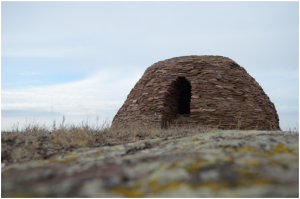


According to academician AlkeiMargulan, these structures, which are rarely found in Kazakhstan, known under the name “Uitas”, were built in the form of the oldest Kazakh dwelling “shoshaly”, possibly, had sacred, ritual meaning.



According to local legends, in the 17-18 centuries a bloody battle took place in the valley between the hills on which the monuments stand. The headquarters of the warlords of the warring clans were exactly located in here.
Mausoleum of Barak Zhanuzakuly (Karabaluanuly)
A warrior Barak Zhanuzakuly was born in 1696, now in the Dzhangilda district of the Kostanay region. His father ZhanuzakAldiyaruly was a grappler.
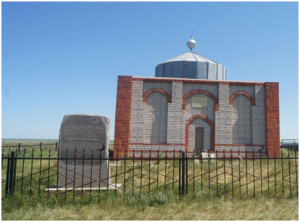


The warrior Barak participated in the meeting of the battles of Bulanty and Anyrakay. Bukharzhyrau in his writings recalls Barak as the very brave warrior. By his faithful service, the warrior won the trust of Abylai Khan. Also among the people, Barak was known as a person with great physical strength.
The warrior Barak lived to a ripe old age and before his death he bequeathed to take his body to the mausoleum of Khoja AkhmetYassaui and bury it next to his father.
For more than two centuries, Muslims not only in Kazakhstan, but also in the border regions of Russia, have been visiting the grave of Barak warrior to pray and perform sacrificial rites.
Over the years of its existence, the mausoleum of Barak warrior was reconstructed several times, the old mausoleum was renovated in 1996.
Keikiwarrior’smausoleum
In 2017, the Keiki Batyr mausoleum was erected in the village of Tasty, Amangeldy district. His remains are buried in here. The mausoleum is a fifteen-meter-high structure with a dome on which a crescent is installed. Inside the mazar there is a gravestone and two memorial plaques with portraits of the batyr and text in three languages.
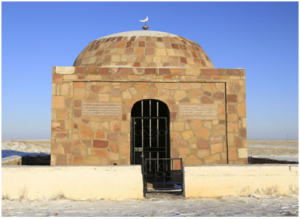


Nurmagambet Kokembaevis popularly known as Keiki warrior was born in 1871 in the Baitum tract of Kostanay region. The warrior came from the KulanKypshak clan of the Middle Zhuz.
“Keiki” – means a hermit, he was nicknamed so for the special way of life of a hunter. He was a master of different types of weapons and was a very well-aimed marksman. During the period of the national liberation movement of AmangeldyImanov and Abdygappar Khan, the warrior led the best detachment of marksmen.
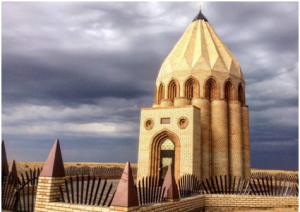


After the death of Amangeldy Imanov, Keiki warrior with his closest comrades-in-arms hid in the Ulytau and Kyzylkum mountains, waging an anti-Soviet struggle until 1923. In the same year, he was surrounded by the Red Army, and as a result of a long battle he was killed.
The severed head of the warrior, as proof of his death, was first sent to Orenburg, then to St. Petersburg, and then it was transferred to the Museum of Anthropology and Ethnography, better known as the Kunstkamera.
Only in 2016, the remains of Keikiwarriorwere returned to Kazakhstan. Hungarian anthropologists carried out the restoration of the guise of the legendary warrior.
